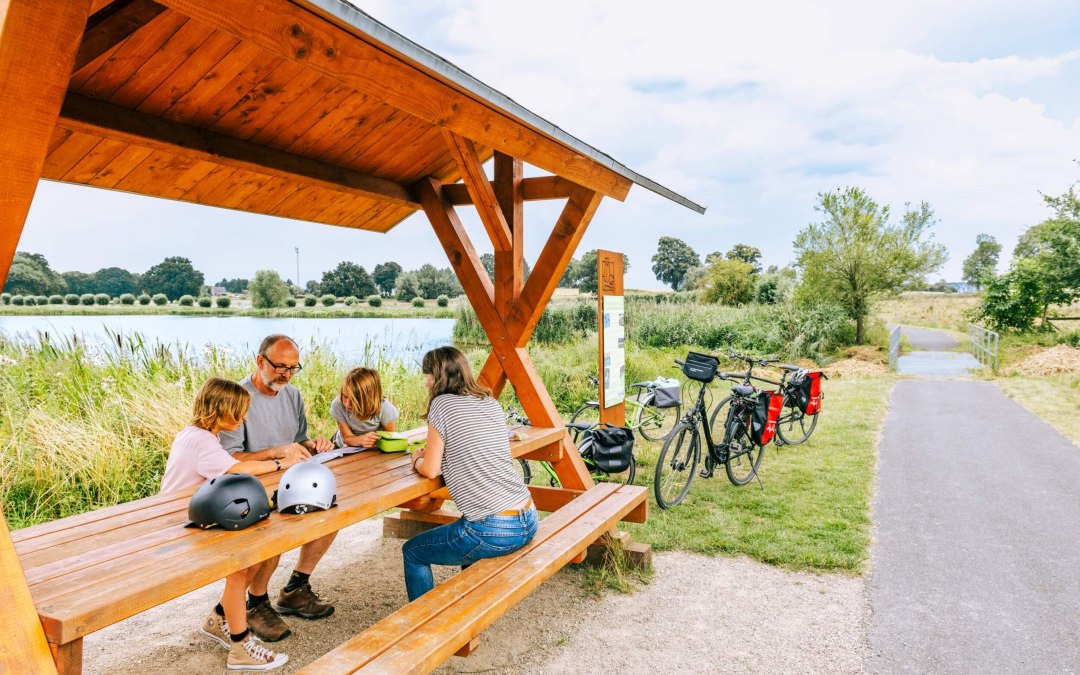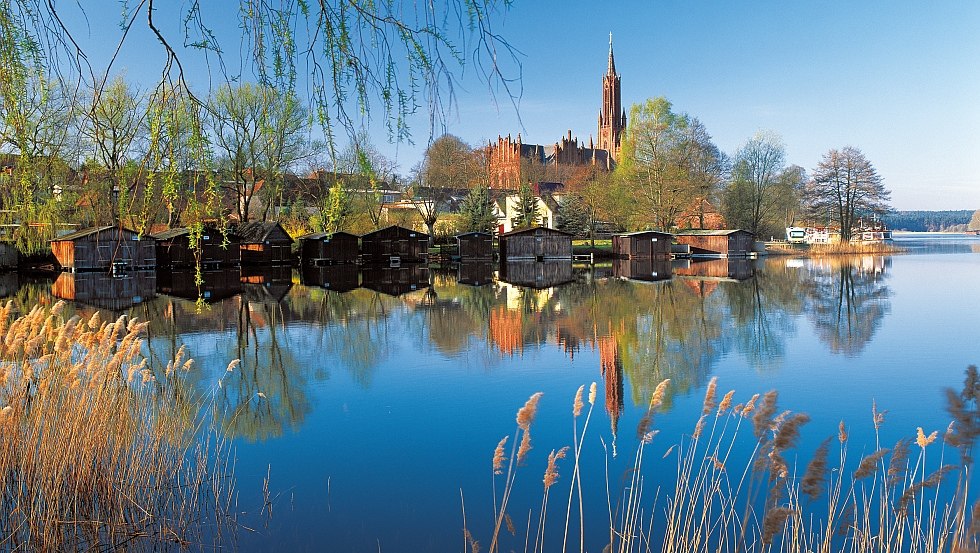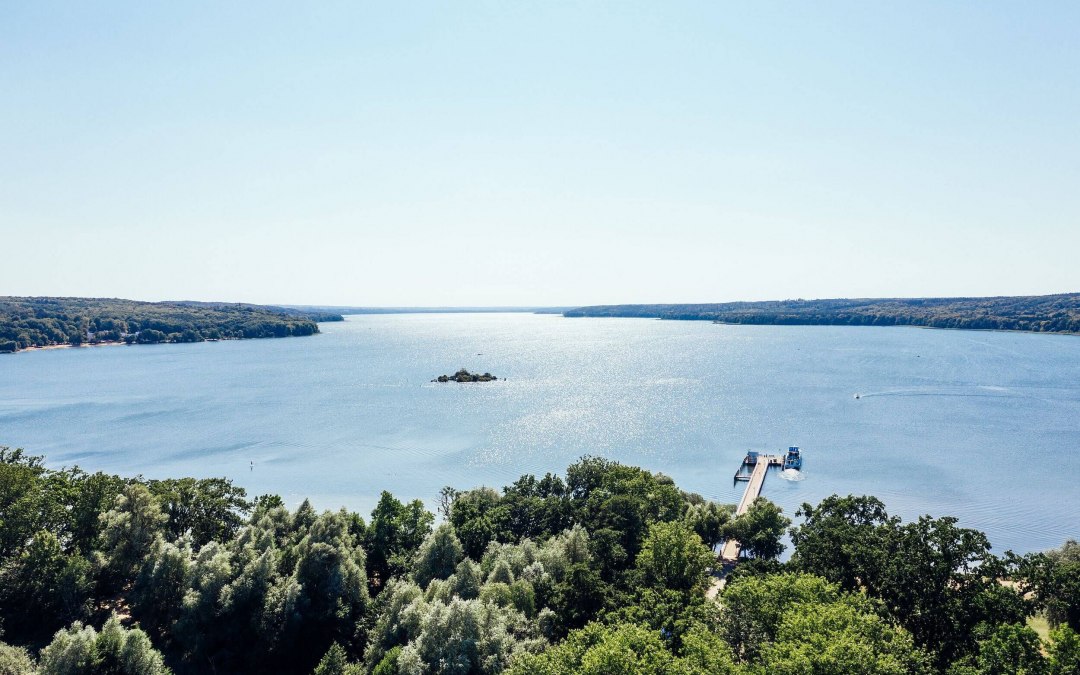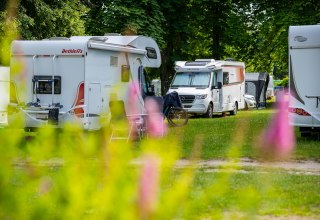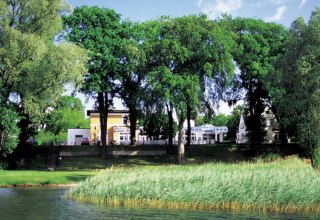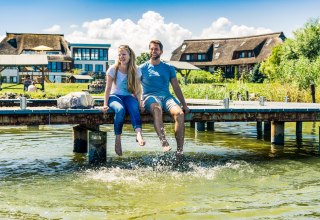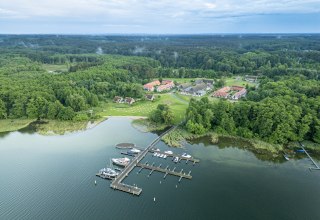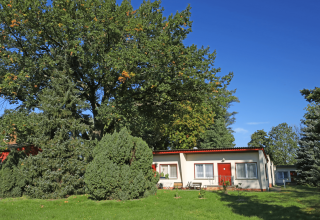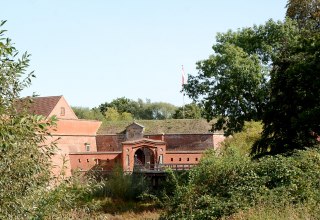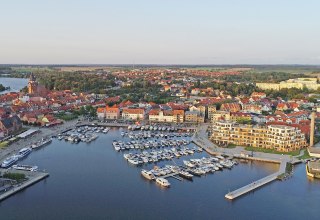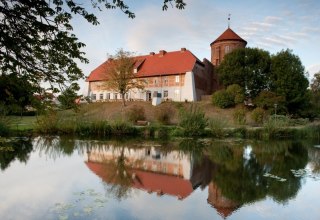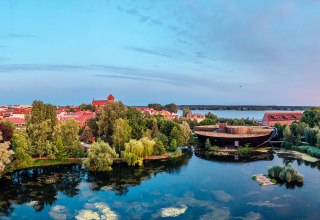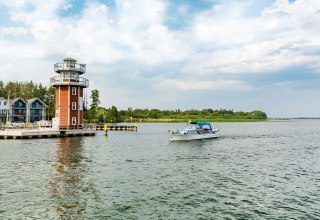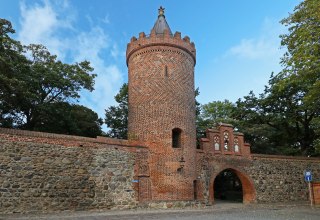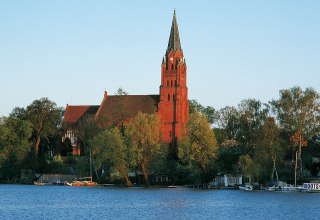Starting from Lüneburg, the cycle route leads through the Elbe floodplains to the Griesen region. The magnificent castle in Ludwigslust shines in the landscape characterized by paddocks and fields. In Neustadt-Glewe, the medieval fortifications watch over the gateway to the Lewitz. The bird sanctuary is home to many canals and fish ponds, and the Elde is particularly inviting for swimming and paddling.
In Röbel/Müritz, cyclists come across Germany's largest inland lake. The tranquillity of the Müritz National Park offers a charming contrast to the lively harbour town of Waren (Müritz), interrupted only by the rustling of the leaves of ancient trees.
At the northern tip of Lake Tollensesee is the town of Neubrandenburg with its well-preserved fortifications and four magnificent town gates. The route continues to Vorpommern. Idyllic and close to nature, the cycle path leads through the Brohmer Berge until it reaches the Szczecin Lagoon Nature Park (Am Stettiner Haff). Ueckermünde, the first town on the Szczecin Lagoon, marks the end of the cycle route.
Route characteristics:
The Elbe-Oderhaff cycle route, which is predominantly traffic-free, runs mainly on asphalt and concrete slab paths, but also on well-developed cycle paths, which can be either asphalt or water-bound. Sections of the route run along sandy paths and cobbled roads.
The Elbe-Oderhaff cycle route is currently signposted throughout.





